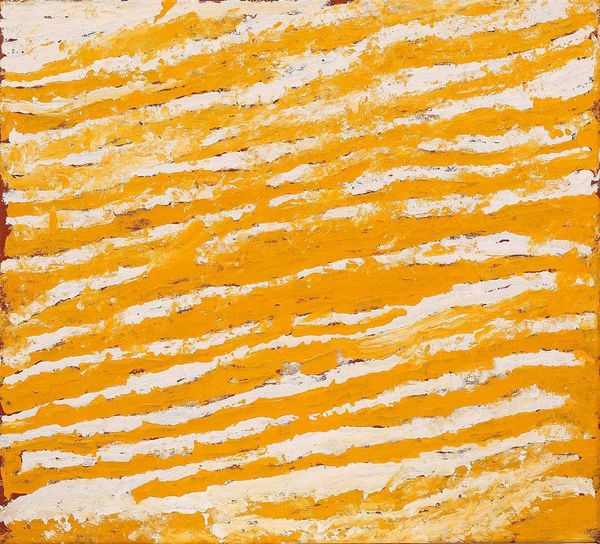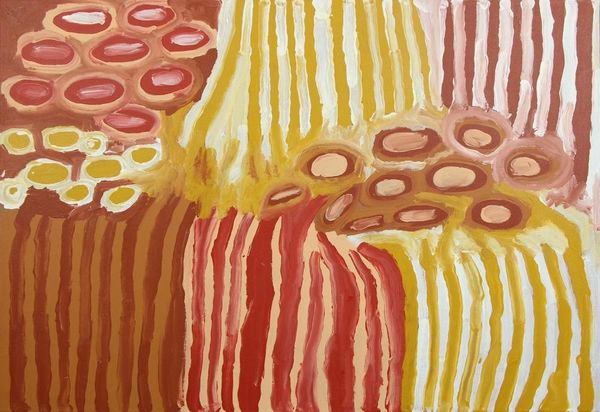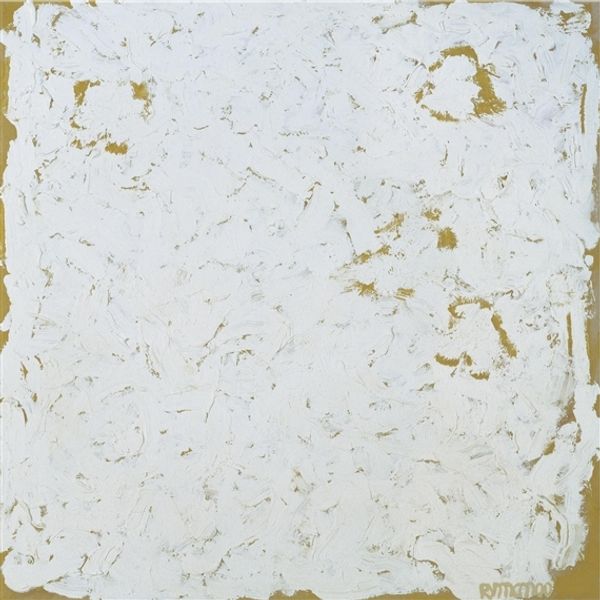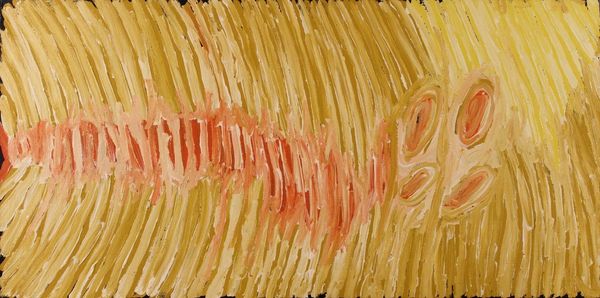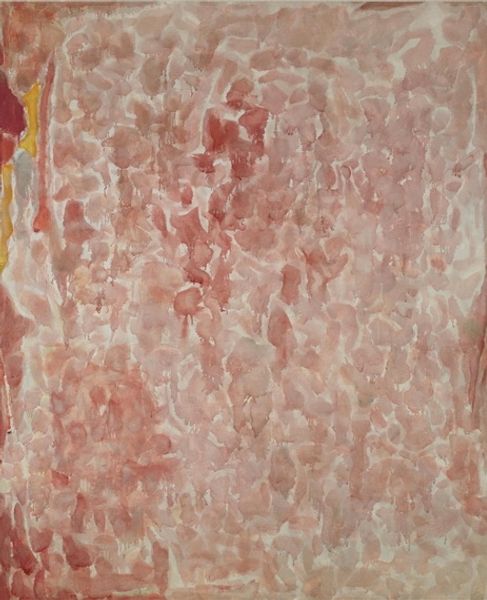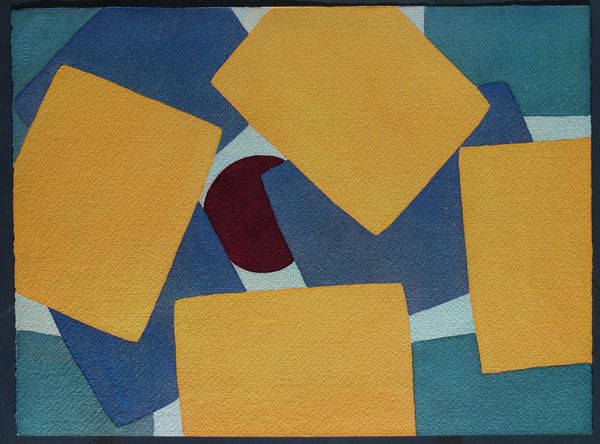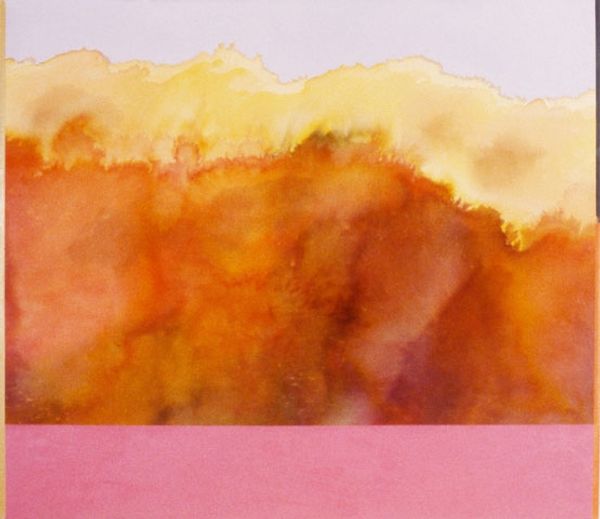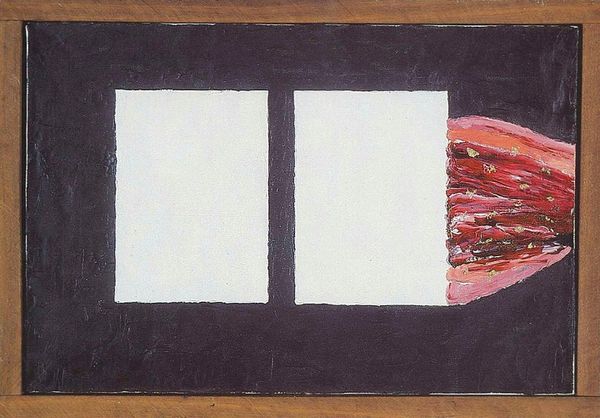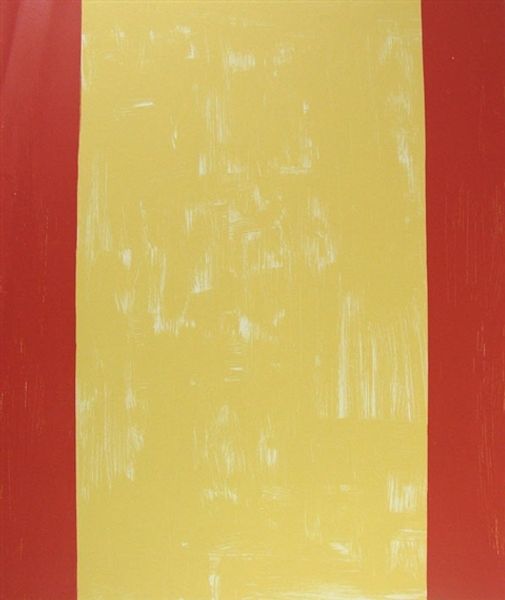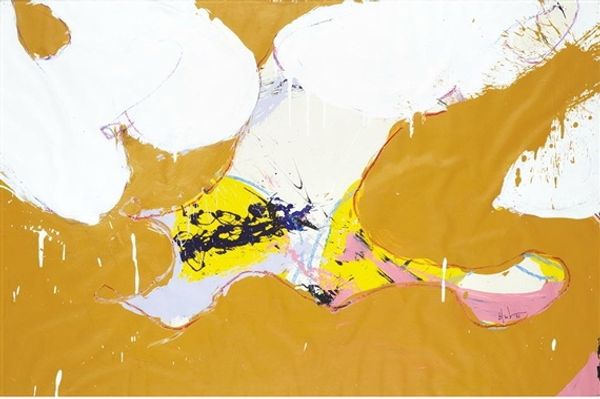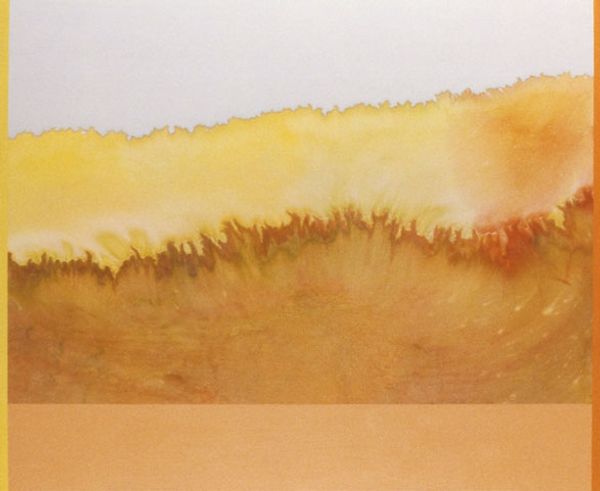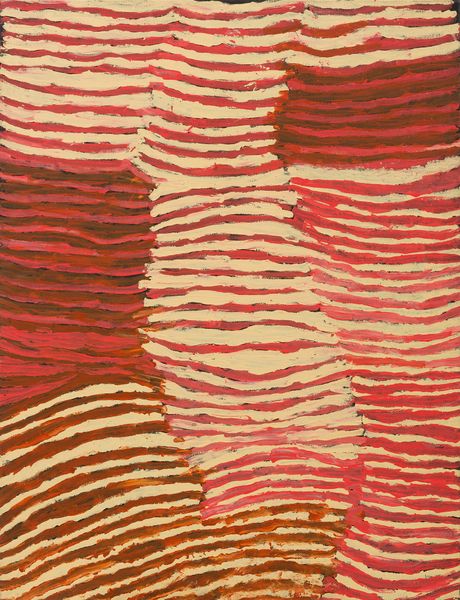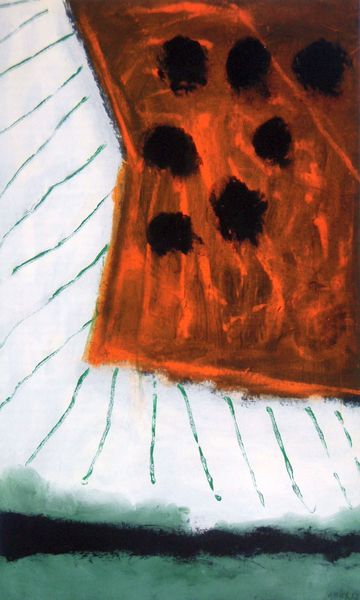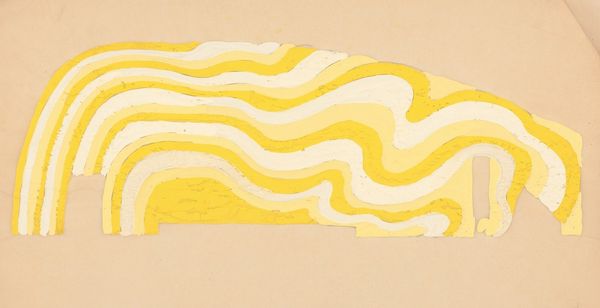
painting, acrylic-paint
#
acrylic
#
abstract painting
#
food
#
painting
#
acrylic-paint
#
acrylic on canvas
#
pop-art
#
realism
Copyright: James Rosenquist,Fair Use
Curator: We’re looking at “White Bread,” a 1964 acrylic on canvas by James Rosenquist. Editor: Good heavens, it’s…bread! And aggressively yellow. Is that butter or something more synthetic? Curator: Precisely. The high-key color palette and mundane subject matter speak to the burgeoning Pop Art movement. Consider the implications of elevating everyday items to high art through painting. It compels one to deconstruct how our consumerist culture imbues significance in these otherwise unremarkable objects. Editor: Yes, but at what cost? I'm interested in the physicality of the painting, how Rosenquist applied the acrylic. Look at the almost careless application of the "butter"—it flattens the scene. There's no attempt at realism, yet this quotidian object is treated with a certain gravity through scale. Also, I cannot stop wondering what brand of acrylics the artist may have purchased… did he consider cost, or the brand-names involved? Curator: A crucial point! It seems to both celebrate and critique commodity culture simultaneously. This use of acrylic further underscores this. Consider, the very qualities of this relatively new industrial medium—its flatness, its uniform texture—reflects a society awash in mass production. Editor: I cannot but focus upon the social implications regarding food culture at the time this painting was made, namely its role in shaping our perceptions. It brings up questions regarding the history of industrialized food production during the early 1960s, particularly around bread. Curator: I concur. What may read at first glance as an innocuous still life can serve as an evocative portal into a more profound reflection on our relationship to both commercialism and the structure of visual languages. The scale certainly challenges any sort of neutral observation. Editor: Indeed, that interplay is at the very core of the painting. So simple, and yet so implicated with a lot of industrial and social underpinnings. Curator: One cannot escape considering how such considerations help shape our understanding and interpretation of art in any way, so in a way the painting also compels the beholder to reflect on visual signification as a system of codified representation. Editor: Leaving one, perhaps, not just hungry for white bread and acrylic color...but, in point of fact, insight!
Comments
No comments
Be the first to comment and join the conversation on the ultimate creative platform.
